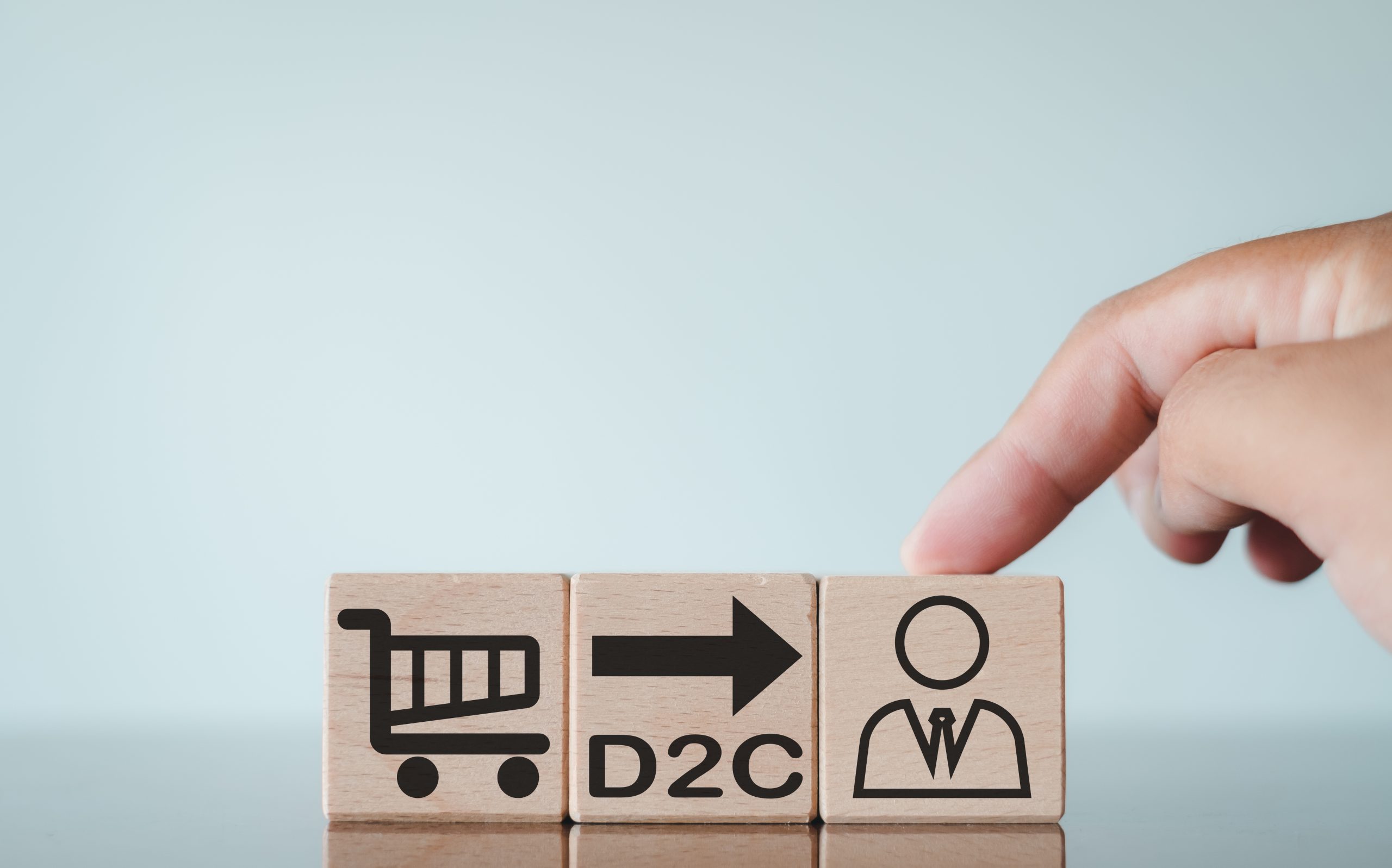A guide to understanding the buyer’s journey in multichannel retail
With today’s consumers valuing convenience and flexibility, opting for a multichannel retail strategy can help boost your business and keep your customers happy.

Ioana Neamt

Gone are the days when all you needed to open and keep a successful retail business was a physical location and good word of mouth.
People can now shop directly from the comfort of their homes (with a nice cup of joe in one hand and a credit card in the other), and retailers have to focus their marketing strategies across multiple channels. So, let’s learn more about how the online can coexist with the offline and break down the what, why, and how of multichannel retail.
You’ll see that multichannel retail is not just about selling things (also about that, of course), but it’s more about creating an experience for your customers that’s as diverse and interesting as your own taste in tech, fashion, or whatever floats your boat.
Whether you’re a seasoned retail pro looking to expand your business or an eager newbie who wants to learn about the retail universe, we’ve got you covered. So, grab your cup of coffee, and let’s explore the exciting journey of multichannel retail.
What is multichannel retail?
Multichannel retail is like having your favorite coffee served in multiple restaurants. It’s basically selling your product through different platforms so that it can reach more customers.
Imagine your business as a rockstar, giving performances on various stages across the world — like a physical venue, a website-based one, a social media stage, and even a stage you can access directly through a phone app. So, multichannel retail? It’s your golden ticket to reaching customers in all the trendy cool spots.
The different types of multichannel retail
Alright, let’s get down to business. We’ve got loads of multichannel retail types to unpack here, each with its own kind of flavor. Picture it like an open buffet with options galore.
- Traditional in-store presence
The OG shopping experience. This is when customers simply walk into a physical store, touch products, and get that in-person retail therapy. It’s the nostalgic joy of strolling down aisles, trying on clothes, and chatting with the friendly store associates.
Also known as brick-and-mortar, this type of retail is all about creating a tangible, immersive shopping experience where the joy of discovery is right there, at your fingertips.
- Direct-to-consumer e-commerce
Now we enter the virtual shopping wonderland, where everything is possible. Well, not really, but where most things can be possible. With direct-to-consumer e-commerce, your favorite brands are just a click away.
It’s the simplicity and commodity of shopping from your couch, browsing through a digital catalog, and having your things delivered to your doorstep — no queues, no closing hours — just the joy of online retail therapy in your pajamas.
- Social media platforms
Did you think social media was just for scrolling through memes and looking at random cat pictures? Think again. Social media platforms are a shopping hotspot. They reel you in with products while you’re not even actively looking for them. They basically bring the storefront to your feed, allowing you to discover, like, and purchase — all without leaving the social media app. It’s window shopping gone digital, with a sprinkle of social interaction.
- Online marketplaces
Unlike social media platforms, where you’ll find entertainment mixed with products, online marketplaces are like giant shopping hubs. Here’s where sellers from all over come together and create a one-stop shop for consumers. Variety is the keyword. It’s like a digital bazaar that offers convenience and variety in a virtual landscape.
- Mobile apps
Your favorite store — now pocket-sized. Mobile apps in multichannel retail allow you to browse products, check reviews, and make purchases — everything at your fingertips in one dedicated app. The ultimate convenience for the busy shopper who wants their favorite brands in their pocket at all times.
- Wholesale distribution channels
Go big or go home! Wholesale is all about bulk buying and catering to businesses that need to purchase large quantities of products. It’s the behind-the-scenes player in the retail game that supplies the retailers with the inventory they need to keep their shelves stocked.
- Phone orders
Let’s take a step back from all this innovation and throw it back to the good ol’ days of dialing up to place an order. Telephone orders in multichannel retail add a personal touch to the shopping experience. Customers can interact with a friendly voice, ask questions about products, get answers instantly, and place their orders. It’s a mix of modern convenience with a touch of vintage charm.

Benefits of a multichannel retail strategy
Now that we’ve covered the what and how, let’s move on to the why and learn about the advantages of using a multichannel retail strategy. Spoiler alert — there’s a bunch of them.
- Broader audience outreach
Start casting your net far and wide! With a multichannel approach, you’re not just relying on foot traffic. You’re tapping into the vast online world, reaching customers all over the world. It’s like you’re turning on a spotlight that says, “Hey, check out our amazing products”.
- Enhanced customer experience
Shopping should be easy and simple. Multichannel retail allows customers the flexibility of choosing how they want to shop. Whether it’s old-fashioned stores, online, or their favorite social media platform, the power is in their hands. Not to mention that smoother, more personalized experiences can definitely turn happy customers into repeat customers. And who doesn’t want that?
- Using data for tailored solutions
Paging Mr. Sherlock. Multichannel retail holds a goldmine of data that is a godsend when wanting to gather insights that help tailor your products. Using this data, you can create more personalized recommendations and promotions to keep your customers happy and engaged. Think of data like a crystal ball showing exactly what your customers want.
- Cost reduction and ROI maximization
Money matters, and there’s no doubt about it. By using a multichannel strategy, you can actually cut costs by only focusing on channels that deliver you the best results. Plus, the diverse reach can boost sales and, therefore, maximize your return on investment.
- Enhanced customer flexibility
The spice of retail life? Variety, of course. Multichannel retail allows your customers to choose how, when, and where. Whether you’re quickly browsing your phone during lunch, chatting to an in-store sales rep on the weekend, or making a purchase online, you can decide everything. It’s the ultimate shopping flexibility for the modern, on-the-go lifestyle.

Multichannel vs. omnichannel retail
Although they might sound similar, multichannel and omnichannel retail are very different. While multichannel operates with some independence, omnichannel ensures that the shopping experience is synchronized and harmonized.
Multichannel retail
Multichannel retail is basically like having a bunch of doors, all allowing your customers to access your store. But each door leads to a different shopping adventure. It’s the strategy of selling your products through different channels. The magic of it lies in casting a wide net, reaching customers, and offering them options and convenience.
Omnichannel retail
Omnichannel retail, on the other hand, is like having a bunch of doors to your store, but all of them lead to the exact same shopping experience.
See it as this: you start browsing on your laptop, see something you like, and add it to your cart. While you’re going out for a stroll, you switch to your phone and continue shopping. At the end of the stroll, you might just step into the physical store, and voilà — everything’s synced up. It’s a well-orchestrated blend of online and offline channels that work together to deliver a seamless shopping experience to the customer.
Challenges of multichannel sales
Navigating the multichannel sales landscape can feel like you’re on a thrilling adventure, but be warned that it does come with its fair share of challenges.
- Sales attribution
Identifying which channel gets the credit for a sale can be tricky. With customers bouncing back and forth between channels, it’s hard to figure out the exact path that led to a purchase. It’s almost like detective work. But it’s important because you need to understand what’s working and what’s not so that you can smartly invest your resources. Consider using multichannel inventory management software to help with this.
- Efficient inventory management
Keeping tabs on inventory across various channels is more or less like trying to herd a bunch of cats. Each channel may have its own demand patterns, and without a well-synced system, you face the risk of overstocking or running out of popular items. Efficient inventory management is the key to meeting customer demand without drowning in surplus or losing sales because of shortages.
- Strategic marketing and promotion
You need finesse to craft a consistent marketing message across diverse channels. What works on social media might not work as well in a physical store. So, balancing promotional strategies to cater to the unique characteristics of each channel while keeping a cohesive brand image can be a juggling act.
- Pricing strategies
Customers today are very savvy, and they’ll take the time and effort to compare prices across channels. If you don’t want them shutting the door to your business, you need to ensure consistent pricing while accounting for variations in costs associated with each channel. What you need to do is offer value without undercutting your own profits.
- Logistics operations
Shipping and fulfillment logistics can often be a nightmare in multichannel sales. However, if you successfully coordinate the fulfillment process to meet the diverse requirements while keeping your customers happy, then you’re good to go.
How to achieve your multichannel retail goals using Katana

Katana is a cloud-based inventory platform that helps you manage your business seamlessly by integrating all your other apps and platforms. Katana comes with features to boost your multichannel retail strategy, including:
- Real-time inventory management
Monitor your retail inventory seamlessly by gaining instant visibility into your entire stock across all channels. This will help address any shortages and prevent overstock and stockouts.
Craft production plans and schedules effortlessly by assigning tasks to your operators (shop-level workers). Prioritize tasks according to demand, inventory levels, and the unique needs of your business.
- Valuable insights
Katana provides real-time data on everything from production and orders to sales and inventory movements. It will also allow you to monitor performance, track sales trends, and strategize for future demand.
FAQ
How can a small business start with multichannel retailing?
Identify key channels based on your audience and learn how to leverage e-commerce platforms, social media, and simple inventory management tools to reach your target audience.
Is it possible to switch between multichannel and omnichannel strategies?
Yes. Any business can evolve from multichannel to omnichannel by integrating channels for a seamless customer experience.
How does multichannel retail impact brand consistency?
Consistency is very important, so it’s best to use branding elements like logos and messaging across all channels.

Ioana Neamt
Table of contents
Get inventory trends, news, and tips every month
Get visibility over your sales and stock
Wave goodbye to uncertainty by using Katana Cloud Inventory for total inventory control
